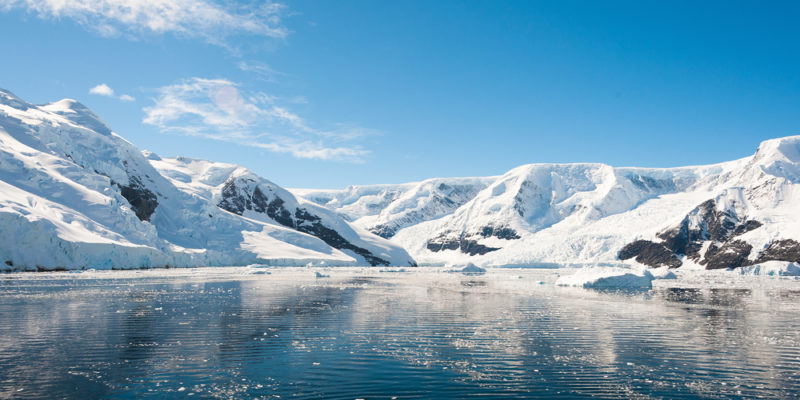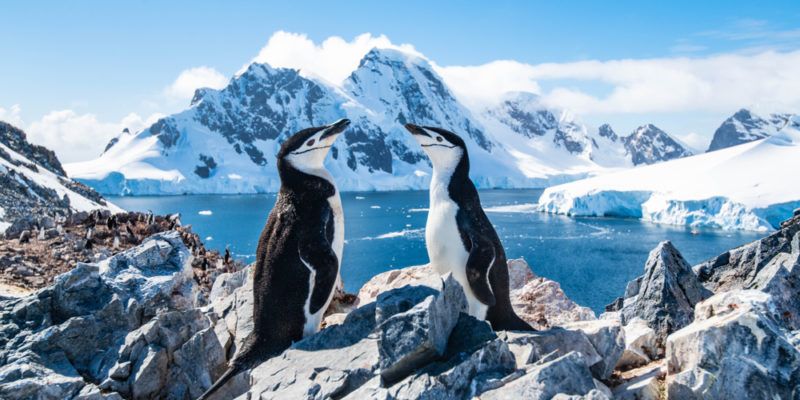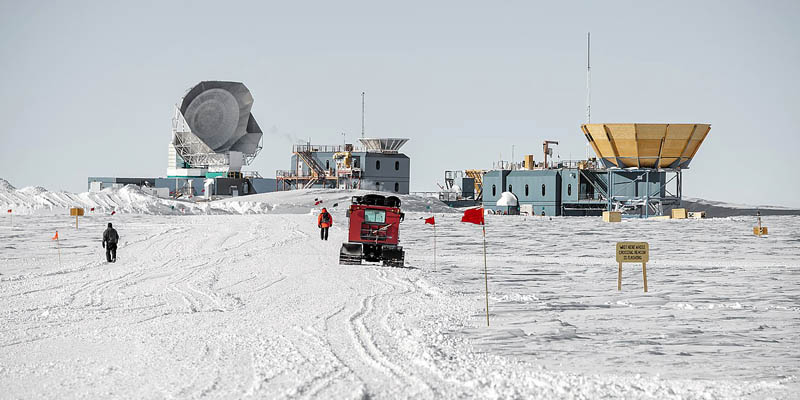We explore the South Pole, and describe its climate, flora and fauna. In addition, we explain what scientific research stations are.

What is the South Pole?
The South Pole is the southernmost point on Earth's surface. Its latitude and longitude are 90 degrees south and 0 degrees east (90° 0'0 "S 0° 0'0 "E). All meridians converge at this point which, along with the North Pole, is the farthest on Earth's surface from the equator.
It is the extreme opposite point from the North Pole. An imaginary line can be drawn between the poles, which is the axis of rotation of the planet.
The South Pole is located in Antarctica, the world’s southernmost continent. Unlike the North Pole, the territories near the South Pole have never been colonized. In fact, the continent of Antarctica was only discovered in the 19th century.
- See also: North Pole
Climate of the South Pole
The climate of the South Pole is one of the most extreme in the world, with temperatures even lower than those of the North Pole.
In summer, temperatures average -13 °F (-25 °C), while in winter they hover around -85 °F (-65 °C). The lowest recorded temperature was -117.4 °F (-83 °C) in 1983 at the Russian Vostok Station. The highest recorded temperature was 9.9 °F (-12.3°C) in 2011 at the Amundsen-Scott Station.
The seasons at the pole are much more drastic than on the rest of the planet. During winter and autumn, the sun does not appear above the horizon for several months, resulting in a long period of darkness and intense cold. As spring and summer approach, the sun gradually appears above the horizon, resulting in progressive light that lasts for several months, without getting dark during the nights.
At the South Pole, the year is divided into a long day (with periods of constant sunlight) and a long night (extremely cold and dark). Due to this, at the South Pole, time cannot be defined according to the position of the sun in the sky. Therefore, the official time of the South Pole has been arbitrarily established as that of New Zealand.
Flora of the South Pole

There is no vegetation at the South Pole due to extreme climatic conditions. Temperatures are too low for plants to grow, and the soil is covered with ice and snow all year round.
Although there are no plants, some life forms exist which have managed to adapt to the extreme conditions of Antarctica and the South Pole, such as lichen and algae. These organisms grow on rocks, ice and snow, and can survive the extremely low temperatures of the South Pole. The vegetation is mainly located in coastal areas, that is, relatively far from the exact Pole.
Fauna of the South Pole

The fauna of the South Pole is also limited by the extreme climatic conditions. In Antarctica, vertebrate animals are found exclusively in coastal areas, relatively far from the South Pole. These include Antarctic penguins, seabirds, fish, seals, and whales, among others.
Far from the coasts, invertebrate animals such as mites and Antarctic flies can be found, extending across a distance of up to 310 miles (500 km) from the South Pole.
First explorers of the South Pole
The first expedition to reach the South Pole was led by Norwegian Roald Amundsen, arriving at the destination on December 14, 1911. British explorer Robert Falcon Scott's party arrived a month later. Scott and four of his companions died on the return journey.
The first people to fly over the South Pole were explorer Richard Byrd and his pilot Bernt Balchen on November 29, 1929. Almost thirty years later, on October 31, 1956, a group from the United States Navy led by George Dufek managed to land and touch down at the South Pole.
Amundsen-Scott South Pole Station
The Amundsen-Scott South Pole Station is a scientific research station located at the South Pole. It was established by the United States in 1956 and is named after explorers Roald Amundsen and Robert Falcon Scott, who were the first to reach the South Pole. This station is one of three United States research stations in Antarctica.
It is located at about 328 feet (100 m) from the South Pole, though this distance increases over time as the base is situated on floating ice that slowly drifts away from the Pole.
It is an important scientific research center in Antarctica and is dedicated to a wide variety of research in areas such as meteorology, glaciology, atmospheric physics, and astrophysics. Important discoveries have been made in this base that have contributed to the knowledge of the Earth's climate and atmosphere, as well as to the study of the universe.
The Amundsen-Scott Station is one of the most remote research stations in the world. People working there face extremely harsh weather conditions, with temperatures that can drop below -94 °F (-70 °C), strong winds, and little sunlight throughout much of the year.
Despite these challenges, the station continues to be an important center for scientific research and exploration in Antarctica.
Scientific research at the South Pole

The South Pole is a place of great interest for scientific research due to its unique characteristics:
- Extreme climate. It is one of the coldest places on the planet, with temperatures that can reach -112 °F (-80°C). This makes it an ideal area to study the effects of extreme climate on human, animal, and plant life.
- Isolated location. Due to its remote location, it is isolated from the rest of the world. This makes it an ideal natural laboratory to study the atmosphere, climate, and geological processes without the effects of pollution and human activities.
Among the research carried out at the South Pole is:
- Astronomical research. Its location, in the middle of Antarctica, makes it an ideal place for astronomical observation due to the lack of light pollution and cloud cover resulting from its dry climate throughout most of the year.
- Ice research. The Antarctic ice sheet is the largest in the world and contains valuable information about Earth's climate and climate history.
- Polar biology research. It is home to a great diversity of polar life, including bacteria, algae, and animals adapted to extreme conditions. This makes it an ideal place to study the evolution and adaptation of life in extreme conditions.
What is the Antarctic Treaty? It is an agreement between thirteen countries aimed at regulating international relations in Antarctica, including the South Pole. The treaty establishes that the territory of Antarctica can only be used for peaceful purposes. In addition, considering that all signatory countries had territorial claims on the continent, the treaty freezes disputes over territorial sovereignty.
References
- Britannica (s.f). South Pole. Britannica
- Fundación Aquae (2020). Las diferencias entre Polo Norte y Polo Sur. FundacionAquae
- Juste, I. (2022). Qué animales viven en el Polo Norte y Sur. EcologiaVerde
Explore next:
Was this information useful to you?
Yes NoThank you for visiting us :)